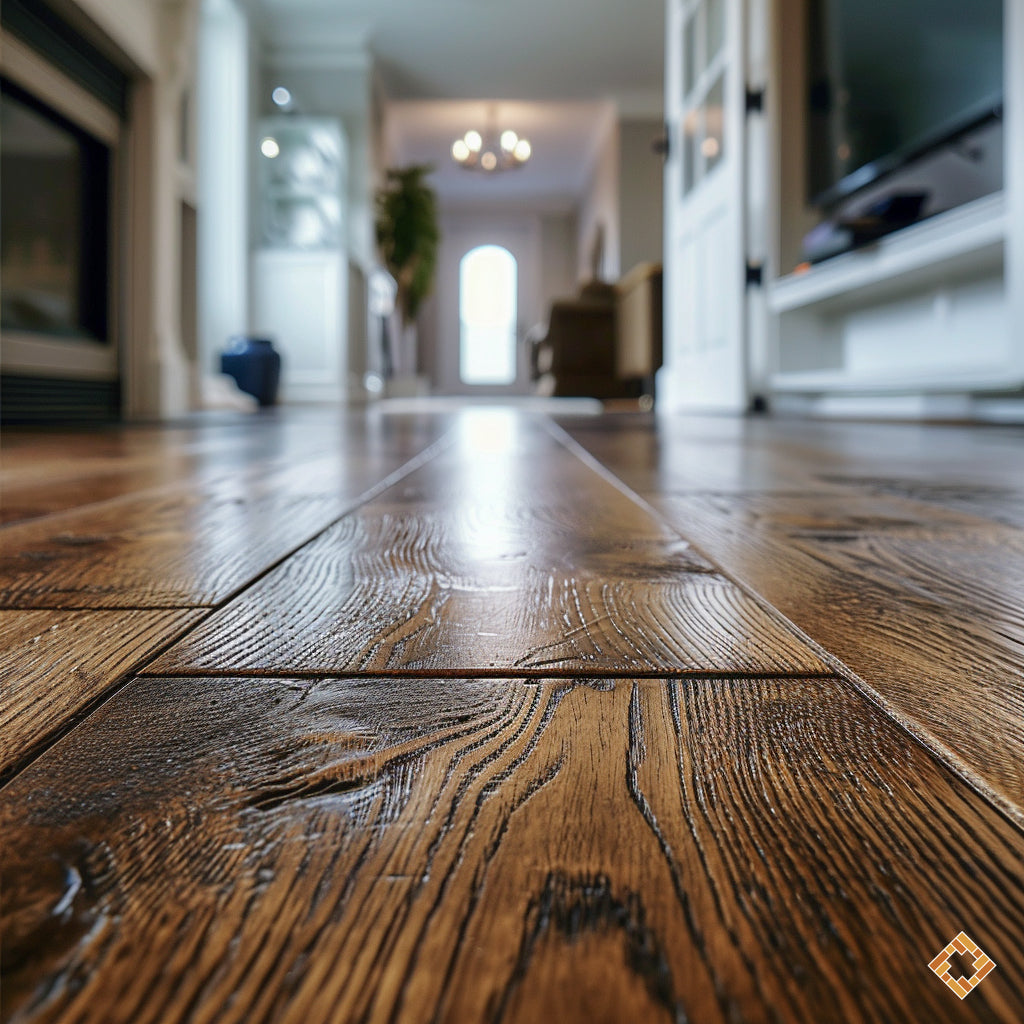Avoid Common Flooring Installation Mistakes
The beauty of a well-installed floor is undeniable. It can transform a room, infuse warmth and welcoming ambiance, all while adding value to your property. However, flooring installation is not a task to be taken lightly. Common mistakes can not only compromise the aesthetics of your space but also lead to unforeseen expenses for repairs. At Plancher Deluxe, we understand the importance of correctly installing a floor. So, here are our tips to avoid common errors and ensure a flawless floor installation.
Choosing the Right Material
Hardwood, Engineered, or Laminate?
The choice of your flooring material is crucial. Each type of flooring has its own advantages and disadvantages, so make sure to have a clear understanding of your needs before making a decision.
-
Hardwood : Hardwood brings timeless elegance to any room. It is sturdy, durable, and can be sanded and refinished to restore its original beauty. However, it is sensitive to moisture and requires regular maintenance.
-
Engineered : Engineered wood floors are more moisture-resistant than solid hardwood, making them perfect for basements or kitchens. They are also easier to install due to their layered construction.
-
Laminate : Laminate floors are budget-friendly and easy to install. They are suitable for DIY projects but cannot be sanded like hardwood floors. They are best suited for low-traffic areas.
Assessing Moisture and Subfloor
Before starting the installation, it is essential to check the room's moisture levels. Excessive humidity can lead to swelling and warping of the floor. Also, ensure that the subfloor is flat, clean, and dry. Any irregularities should be addressed before installation.
Adequate Preparation
Material Acclimatization
Allow your flooring material to acclimate to your environment for at least 48 hours before installation. This allows the wood to adapt to your home's conditions, avoiding future deformations.
Proper Tools
Use the right tools for the job. Make sure you have nails, screws, adhesives, and equipment readily available. A circular saw, jigsaw, and sander will also be needed for precise cuts and a perfect fit.
Installation Techniques
Proper Subfloor Installation
The foundation of your floor is just as important as the material itself. Subfloors should be properly installed to avoid sagging or excessive floor movement. Use screws or nails to secure the subfloor to the ground.
Material Installation
Follow the manufacturer's instructions for material installation. Use expansion spacers to maintain a uniform expansion gap around the room's perimeter. Ensure that the planks or tiles are aligned correctly for an aesthetically pleasing result.
Finishes and Molding
The installation of finishing moldings is essential for a polished look. They conceal gaps and protect the edges of the floor. Make sure they are securely attached.
Maintenance and Prevention
Regular Maintenance
A well-maintained floor will last for years. Avoid abrasive products and use cleaners specifically designed for your type of flooring. Also, avoid letting spilled liquids sit on the floor for extended periods.
Preventing Scratches
Place felt pads under furniture to prevent scratches. Use rugs in high-traffic areas to reduce wear and tear.
Control Humidity
Maintain a stable humidity level in your home to prevent issues with wood shrinking and expanding.
Seek Professional Help
Flooring installation can be complex, especially if you have no prior experience. Turning to professionals like Plancher Deluxe will ensure a hassle-free and high-quality installation. Our experts are well-versed in the appropriate techniques for each type of flooring and will ensure that your investment lasts for many years.

